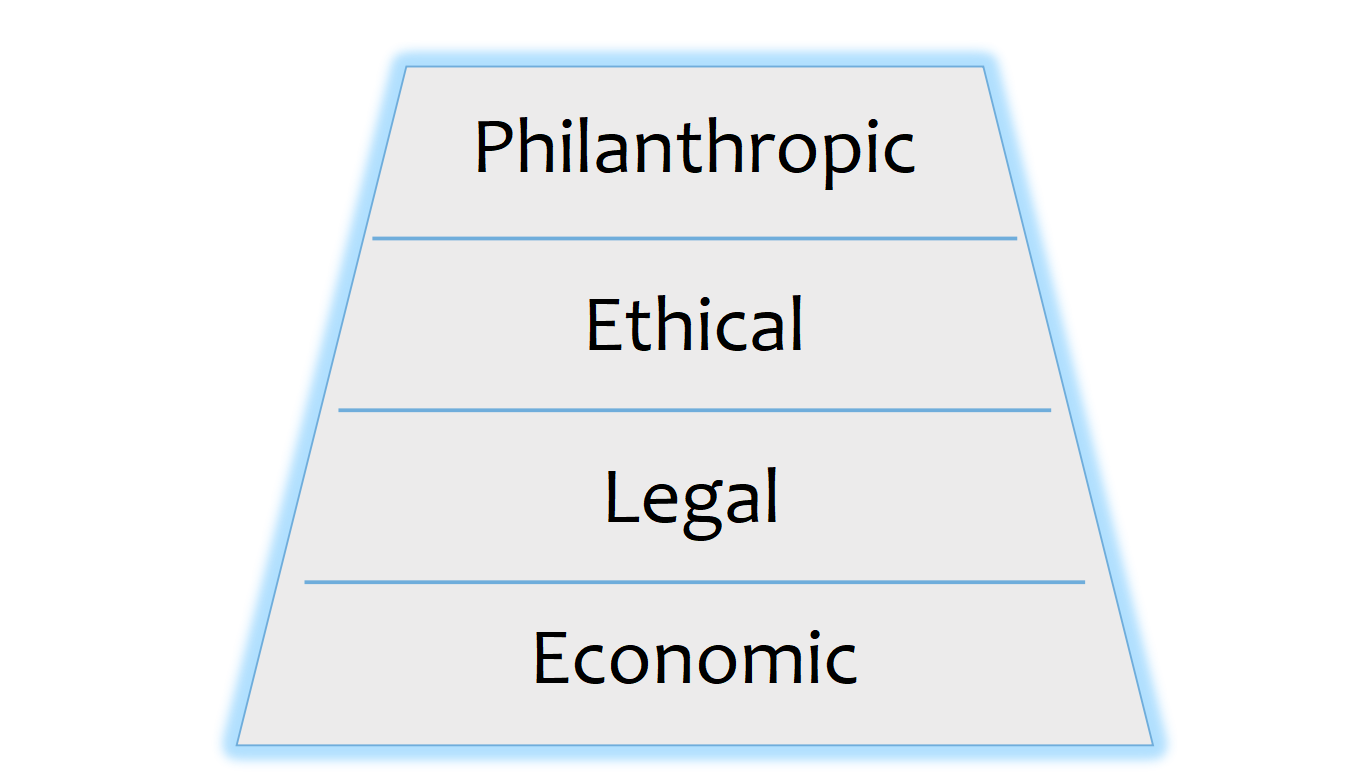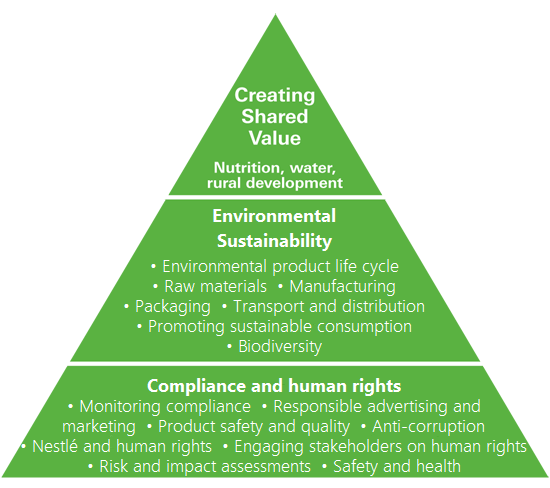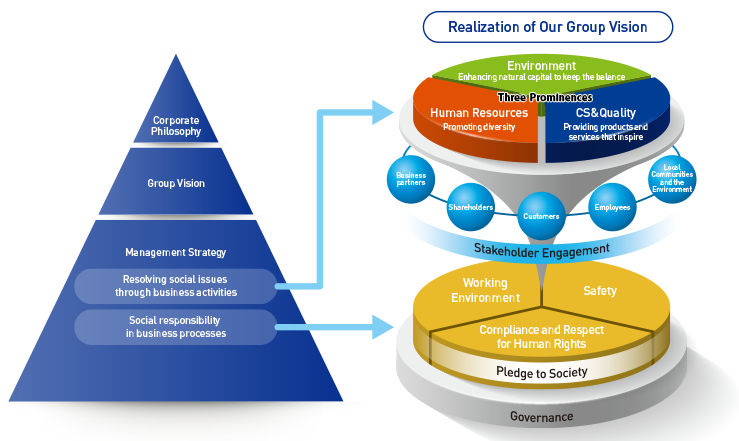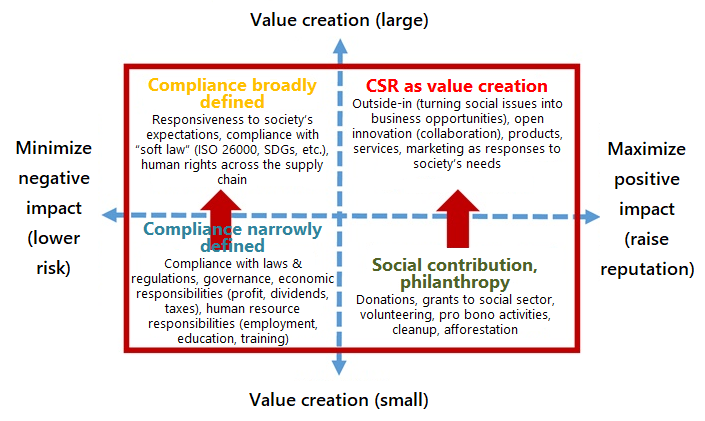
Although a clear definition of “corporate social responsibility” is provided in ISO 26000—published in 2010 to provide guidance on how organizations can operate in a socially responsible way—there is still lingering confusion as to what CSR really means. The term, as defined by the standard, refers to the “responsibility of an organization for the impacts of its decisions and activities on society and the environment, through transparent and ethical behavior that:
- Contributes to sustainable development, including health and the welfare of society;
- Takes into account the expectations of stakeholders;
- Is in compliance with applicable law and consistent with international norms of behavior; and
- Is integrated throughout the organization and practiced in its relationships.”
Corporate managers, though, continue to equate CSR with philanthropy (like donations and volunteering) or regard it merely as a cost center. To be sure, with sustainable investment gaining momentum, an increasing number of businesses are giving greater thought to ESG (environmental, social, and governance) factors and addressing these issues in their sustainability reports. But a broadly shared understanding of CSR among workers and management is still quite rare in Japan’s corporate sector.
In September 2015, Japan’s Government Pension Investment Fund became a signatory to the Principles for Responsible Investment, spurring a rapid expansion of ESG investing in this country. Attention is now being given not just to short-term gains and financial performance but also to long-term perspectives and disclosures of nonfinancial, ESG-related information. It is therefore more important than ever to clarify exactly what CSR entails, the roles it should fulfill, and the areas it should cover.
By referring to concrete examples, I hope to shed new light on how businesses should structure their CSR programs and what domains they should cover, as well as examine the kind of initiatives that are most suitable for the era of ESG investing and the pursuit of the Sustainable Development Goals.
The CSR Pyramid
Perhaps the first reference to corporate “social responsibility” appeared in the 1924 publication Philosophy of Management by Oliver Sheldon (1894–1951), a British authority on business administration, who postulated that service to the community was the primary motive and fundamental basis of industry.
In his 1973 Management: Tasks, Responsibilities, Practices, Peter Drucker devotes a full chapter to the “social responsibilities of enterprises” that emanate, first, from the impact of their own corporate activities, and, second, from issues in the community unrelated to their activities.
While Drucker encouraged active engagement to minimize the negative byproducts of corporate activity, such as waste, noise, and pollutants, he was less enthusiastic about corporate initiatives to address broader social issues, such as human rights and wealth gaps.
Archie Carroll, a leading proponent of CSR while serving on the faculty of the Terry College of Business at the University of Georgia, created a pyramid in a 1991 paper in which “philanthropy” was cited as one of four major social responsibilities of business organizations (see Figure 1).
In the pyramid, a company’s economic responsibilities (including providing employment and paying taxes) are placed at the bottom—the foundation on which all other responsibilities rest. On the next level are legal obligations, that is, compliance with the laws and regulations of national and local governments, above which rest a business’s ethical responsibilities—activities and practices that are expected or prohibited by society, although they are not codified into law. The top layer are philanthropic responsibilities that a company fulfills at its discretion in response to society’s expectation that businesses be good corporate citizens.
Figure 1. The Four Responsibilities of Carroll’s CSR Pyramid 
Source: Created by the author based on Archie B. Carroll’s “The Pyramid of Corporate Social Responsibility: Toward the Moral Management of Organizational Stakeholders,” Business Horizons, July–August 1991.
Since then, CSR has often been explained in terms of pyramids, with many firms, including multinationals, developing their own triangular diagrams to describe their CSR philosophy and initiatives. In the following I will introduce two such pyramids: those conceived by Nestlé and Sekisui Chemical.
Around 2007, then Nestlé CEO Peter Brabeck-Letmathe proposed that the company embrace the concept of “creating shared value” (CSV), which Harvard University’s Michael Porter and Mark Kramer eventually made famous in a 2011 paper published in the Harvard Business Review. The CSV idea continues to exert an influence on corporate managers around the world.
At the base of the “Nestlé in Society” pyramid (Figure 2) is the layer for “compliance and human rights,” above which are “environmental sustainability” and “creating shared value.” The pyramid aims to show that CSV is built on a foundation of compliance and consideration for the environment. This reflects Nestlé’s recognition that many of its products rely on tropical produce, notably coffee and cacao, and that its response to issues in its supply chain like human rights and climate change will have a large bearing on its future growth.
Figure 2. Nestlé in Society Pyramid
Source: Created by Takeshi Shimotaya based on Nestlé’s Creating Shared Value and Meeting Our Commitments 2012.
Sekisui Chemical, which is engaged in housing construction and the manufacture of high-performance plastics and industrial piping materials, created its own CSR pyramid in 2017. At the base lies a management strategy aimed at “resolving social issues through business activities” and “promoting social responsibility in business processes.” The company also undertook a reorganization in 2017 to instill integrated thinking, placing CSR and environmental considerations at the heart of the group’s management strategy.
Figure 3. The Sekisui Chemical Group’s CSR
Source: Sekisui Chemical’s website, https://www.sekisuichemical.com/csr/csr_manage/principle/index.html
The Four Domains of CSR
The structure of each company’s pyramid varies according to sector, business activity, and social context. This is only to be expected, but it can nonetheless obscure a bird’s-eye view of prevailing CSR trends.
In hopes of facilitating such a view, I have created with Masahiko Kawamura (president and chief researcher of the Alterna Research Institute) a quadrilateral that outlines the four main domains of CSR (Figure 4).
At the lower left corner is compliance, narrowly defined. In Japan, compliance is generally understood to mean adherence to laws and regulations, but most experts agree that the concept covers much more. There are, for example, in-house rules and manuals to follow, as well as the need to meet what society and stakeholders expect of a responsible corporate citizen (as described in the official textbook for Level 3 of the CSR Kentei [certification exam], authored by Hiroji Tanaka).
These responses to society’s expectations, including what is referred to as “soft law” (guidelines or codes of conduct like ISO 26000 and the SDGs), make up a second area of compliance, more broadly defined (upper left corner of the figure). Included in this quadrant are steps taken to ensure that workers’ human rights are upheld throughout a company’s supply chain.
This domain is what Peter Drucker cited as the second of the two responsibilities of corporate managers: to contribute to the well-being of the community. While Drucker emphasized the importance of the first responsibility—to be accountable for the economic performance of their organizations—the second, as elucidated in ISO 26000 and the SDGs, commands far greater prominence today than in the 1980s, and companies can no longer afford to ignore society’s expectations if they wish to prevail in the market. This can be seen as an example of the large impact social developments are having on corporate conceptions of CSR.
The lower right quadrant is for social contributions and philanthropy and includes such traditional activities as donations, grants to the social sector, volunteering, cleaning up, and tree plantings. An area that has grown in recent years is the pro bono provision of professional skills and qualifications to the social sector to help with tax-related tasks, produce website, and the like.
Figure 4. The Four Main Domains of CSR
Source: Translated from CSR Kentei (CSR Certification Exam), Level 2 (2017 Revised Edition).
Thinking Outside-In
The top-right corner consists of CSR that creates value; this domain can be thought of as roughly corresponding to the concept of creating shared value (CSV). Of paramount importance here is the idea of “outside-in,” a concept addressed in the SDG Compass—a guide for aligning corporate strategies to the realization of the SDGs.
It is a notion whereby external developments drive what initiatives are taken in-house, not unlike the “market-oriented” approach to business management, whereby one’s activities are determined by what customers want to buy, rather than by one’s in-house strengths. This is a notion that lends itself to tapping into society’s needs to create new markets and business opportunities.
One of the most successful applications of the “outside-in” strategy was Toyota’s development and launch of the Prius, which went on sale in 1997—the year the UN climate change conference adopted the Kyoto Protocol. The vehicle was the first hybrid to be mass-produced, and it has continued to dominate the market, emerging as the all-time best-selling hybrid in both Japan and the world.
The two right-hand squares represent those activities that can be expected to generate benefits for a company, such as by bolstering its reputation. The left-hand squares, on the other hand, are efforts that can lower risks, helping to prevent or mitigate any damage to a company.
The upper two squares, meanwhile, are initiatives that are likely to generate value for the company, while the bottom two quadrants are those unlikely to create much new value.
Of the four domains, perhaps the odd man out is the bottom-right corner for social contributions and other philanthropic activities. Not a few business managers and investors consider these activities to be superfluous, since they do nothing to create new value for the company. I have heard a story of a corporate CSR officer being told by an ESG analyst that unless the company’s social contributions can be shown to have tangible benefits, such initiatives would be seen as costs, not as a means of value creation.
I am personally reluctant to paint corporate philanthropy in such a negative light, as it ignores the significant benefits they can bestow. Many nongovernmental and nonprofit groups in Japan still rely on corporate donations and grants, and their operations would surely grind to a halt should funding dry up.
These groups should no doubt make a greater effort to reach out to individual donors, as their counterparts in the United States and Europe have done, but this will take time. In the meantime, it is an undeniable fact that corporate donations are helping address society’s issues by financing the activities of the social sector.
That said, the two red arrows spanning the lower and upper quadrants indicate the desirability of shifting corporate resources from the domains of corporate philanthropy and legal compliance to the upper two squares, which can be expected to create greater value for both the company and for society.
Another interesting case study of “outside-in” serving as a corporate driving force involves Omron Corp. In 1959, founder Kazuma Tateishi established a corporate motto identifying the company’s missions as being “To improve lives and contribute to a better society,” and this has served as the company’s underlying management philosophy, guiding its activities to not just meet the needs of customers but also create value for society.
This has had a palpable impact on the company’s evolution into a provider of products and services designed to meet society’s emerging needs. Omron, for instance, was the world’s first to develop or market an automated traffic signal, automated train ticket gate system, online automated cash dispenser, and electronic thermometer. It now incorporates third-party assessments of its sustainability initiatives into evaluations of business performance, which are linked to the long-term compensation of the company’s top executives.
The lead taken by management to clearly embrace nonfinancial (sustainability) factors as indicators of corporate performance has freed employees from narrowly pursuing higher sales and profits and given them room to consider solutions that would also benefit society.
CSR and “outside-in” are concerns not just for large companies. The second Green Ocean Grand Awards for business models addressing social issues, organized in March 2018 by Alterna magazine, cited many initiatives undertaken by small and midsize companies. The Minister of the Environment Prize, for example, went to Yamashiro Kayabuki, a company in Kyoto that has been working with the local community to preserve the skills and materials required to build traditional thatched roofs. Tokushimaru, headquartered in the city of Tokushima, meanwhile, contracts with truck owners around the country to provide mobile supermarket services for residents in remote, underserved locations.
From “Renovation” to “Innovation”
The impact of the SDGs has been growing in not only encouraging “outside-in” initiatives at many businesses but also in setting the overall tone and direction of their CSR activities. This was spurred by the Japanese government’s establishment of the SDGs Promotion Headquarters in May 2016 and the November 2017 revision of Nippon Keidanren’s Charter of Corporate Behavior, which placed the SDGs front and center. For the first few years after the SDGs were adopted by the United Nations in September 2015, companies could earn accolades simply by referring to any of the 17 goals that related most closely to their operations and including their pictograms in sustainability or CSR reports.
Going forward, though, companies—especially those with global operations—will need to do much more than share their concerns about a sustainable future to be recognized by society and investors. They must reshape their business operations, taking inspiration from society’s needs and concerns in developing new products and services.
Such an “outside-in” approach to business management will require taking stock of the resources at a company’s disposal and applying them to address the issues confronting society. Businesses are being challenged by society and investors not just to “renovate” their operations but to “innovate” new domains and approaches, setting long-term goals and creating roadmaps to achieve them.
One well-known “innovation” in Japan is the Toyota Environmental Challenge 2050, announced in October 2015. The automaker set six challenges with the aim of reducing its environmental burden to as close to zero as possible, seeking, for example, to (1) slash average CO2 emissions per vehicle by 90% by 2050 compared to 2010 levels and (2) completely eliminate all CO2 emissions from the entire vehicle lifecycle—from materials and parts manufacturing to vehicle assembly, driving, disposal, and recycling.
What this communicates about Toyota’s business strategy over the next few decades is that it intends to make a wholesale shift from conventional gasoline and diesel vehicles and hybrid vehicles to electric and fuel-cell vehicles.
Toyota will not be the only automaker to make such a shift, of course; the trend will be global. For that reason, auto parts manufacturers, too, will need to overhaul their operations in line with the long-term goals of top vehicle makers if they wish to stay in business. Triggering such sweeping changes in society and at private companies may be said to be one of the inherent goals of the SDGs.
Sustainability as a Growth Strategy
Many global companies are setting similar long-term goals. The Danish toymaker Lego has announced it will stop using plastic for its famed toy bricks by 2030, replacing it with a “new sustainable material” that the company will invest 1 billion Danish kroner to develop over the next 15 years.
Unilever announced its Sustainable Living Plan in 2010 to double the company’s sales and halve its environmental impact. Of the 400 brands it owns, 26 that are marketed around the theme of sustainability were growing 46% faster than other brands, as of 2017.
And Swedish clothing retailer H&M has set a goal of using 100% sustainable materials by 2030 through the increased use of Bionic yarn—a recycled polyester created from plastic shoreline waste—organic silk, and organic linen.
Plastic waste probably represents the gravest CSR risk in the world today, with countries around the world beginning to clamp down on plastic marine pollution. Straws, plastic bags, plastic bottles, and other plastic debris collect in ocean patches, some breaking down into microplastics of 5 mm or less that are eaten by seabirds and fish and thereby having a serious impact on the marine ecosystem.
In March 2018, McDonald’s in Britain announced that it would stop providing plastic straws at its 1,300 stores in the country and use paper straws instead on a trial basis. And in July 2018, the city of Seattle in the United States instated a ban on the provision of plastic straws and utensils. Retailers in the city are also prohibited from providing plastic bags, and they must charge 5 cents for large paper bags. San Francisco became the first major city to ban the sale of plastic bottled water on city-owned properties.
How will these trends affect businesses in Japan? Some companies, especially those engaged in making or selling plastic products, might fear a drop in sales, but shifting social priorities can also become a window of opportunity, generating demand for new products or services that mitigate society’s concerns. Companies can expect higher sales, for example, by marketing straws made from non-petroleum-derived or recyclable materials. They can collect used plastic straws and process them into pellets for thermal recycling. Or they might even develop a new way of drinking liquids that does not require the use of a straw.
Some in Japan assert that stringent environmental regulations, if enforced too abruptly, would invite a public backlash. But any benefits of deferring to such opinion and delaying action to restrict the use of plastic products or bottles must be weighed against the potential drawbacks of triggering criticism from overseas visitors to the 2020 Olympic and Paralympic Games in Tokyo.
Indeed, Japanese companies that either have global operations or do contracting work for multinationals risk damaging their reputation overseas if they are not cognizant of the efforts being made around the world to contain plastic pollution.
Ascertaining such global trends in advance and responding quickly can reduce corporate risks and create new opportunities for business development. This, perhaps more than any other factor, is the reason for companies to engage in CSR.
